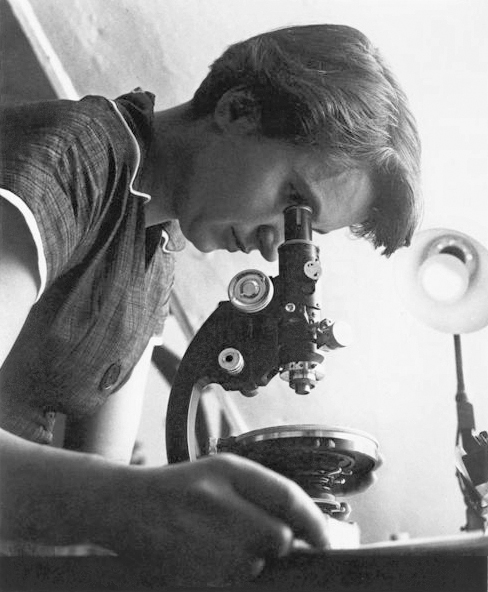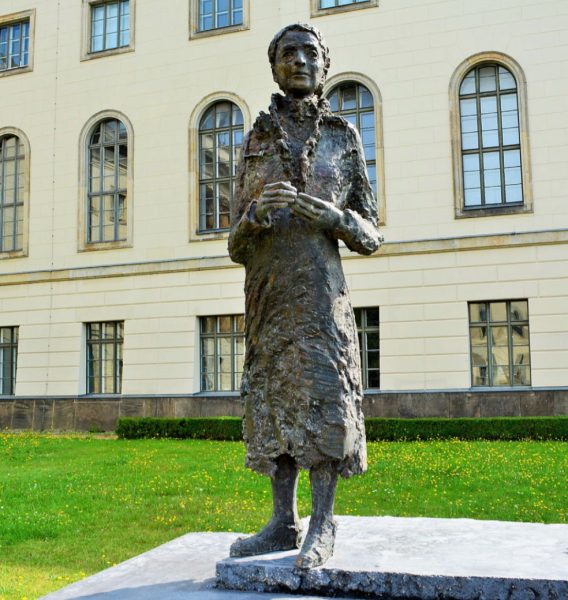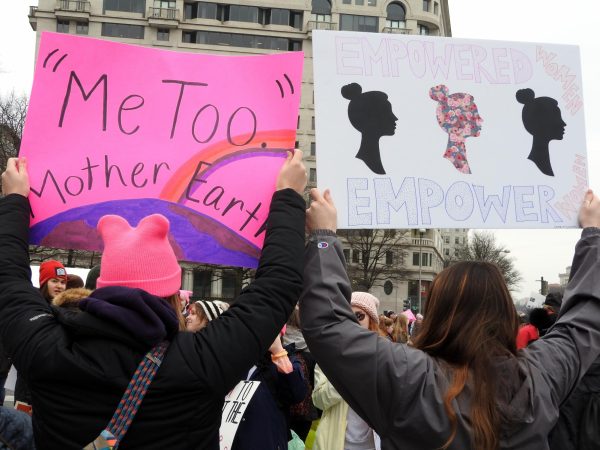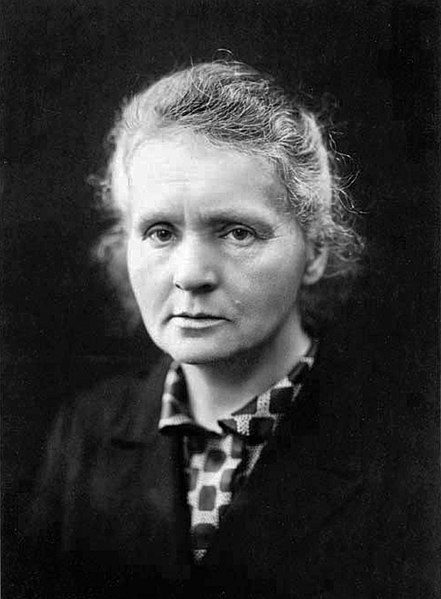Beyond the celebrated narratives of familiar male figures, a great level of brilliance lies hidden within the minds of countless women — pioneers who navigated through countless systemic biases and societal expectations. Their stories, concealed in history and overshadowed by the actions of men, speak of unyielding determination, resilience, and groundbreaking discoveries that have shaped our understanding of the world.
From the lab coats of chemists breaking new ground to the stargazers peering through telescopes, the stories of these women serve as a testament to their indomitable spirit. For these women, the pursuit of scientific excellence was not merely a professional endeavor but a profound act of resilience against a backdrop of systemic challenges.
Historical Pioneers and Their Battles
Countless female scientists like Marie Curie, Rosalind Franklin and Lise Meitner have made groundbreaking contributions, only to have their work discredited.
Marie Curie, born in 1867 in Warsaw Poland, was a pioneering physicist and chemist. Marie Curie, alongside her husband Pierre Curie, conducted extensive research on radioactivity and discovered the elements polonium and radium. Joint efforts between the two led to the development of the theory of radioactivity, challenging prevailing scientific beliefs of the time.
In 1903, Marie Curie became the first woman to be awarded the Nobel Prize in physics, which she shared with her husband Pierre and fellow physicist Henri Becquerel. Later, in 1911, Curie received her second Nobel prize in chemistry for her isolation of Radium and Polonium and her study of their properties.
Even in the face of her greatness, Curie still struggled with gender bias and misogyny. Her successes were often overshadowed by societal prejudices, with critics focusing only on her gender and not her scientific prowess.
Prior to her famous Nobel Prize, The French Academy of Sciences was one of the most prestigious schools with rigorous chemistry and physics courses. The academy was strongly against admitting Curie, and she frequently encountered resistance and skepticism throughout her career.
Rosalind Franklin, British biophysicist and X-ray crystallographer, made significant contributions to the understanding of the molecular structures of DNA, RNA, viruses, coal, and graphite.

Born in 1920, Franklin’s groundbreaking work in X-ray diffraction provided crucial insights into the structure of DNA, laying the foundation for the discovery of its double helix structure. In the early 1950s, Franklin produced high-resolution X-ray images of DNA fibers, capturing the iconic photo 51, which played a pivotal role in the subsequent elucidation of the DNA structure by James Watson and Francis Crick.
Despite her instrumental role, Franklin’s contribution has often been overlooked and marginalized. Her male colleagues, Watson and Crick, utilized her data without her knowledge or permission to propose the double helix model, leading to their Nobel Prize in 1962. She was not given any recognition.
Her untimely death at the age of 37 due to ovarian cancer, likely caused by her extensive exposure to X-rays, tragically curtailed a career that held immense promise.
Today, Rosalind Franklin is rightfully acknowledged for her pioneering contributions to molecular biology, and her story stands as a poignant reminder of challenges faced by women scientists during that era.
Lise Meitner, an Austrian Swedish physicist, was a trailblazing figure in the field of nuclear physics during the early 20th century.

Born in 1878, Meitner collaborated closely with chemist Otto Hahn for many years. Their groundbreaking research led to the discovery of nuclear fission, a crucial development that laid the groundwork for nuclear energy and weapons.
In 1944, Otto Hahn was awarded the Nobel Prize in chemistry for the discovery of nuclear fission, but, similarly to Franklin, Meitner was deliberately excluded from the honor.
Misogynistic Presence Lingers Today
Misogyny persists as a significant and impactful force within STEM fields, casting a shadow on the advancement and recognition of women within these disciplines.
One notable area where the impact is noticeable is in funding. Several research studies, including ‘The STEM Gap: Women and Girls in Science, Technology, Engineering and Mathematics’ conducted by the American Association of University Women (AAUM), have consistently highlighted the disparity of resources between male and female researchers, limiting the financial support available to female scientists. This financial barrier not only affects the scope and scale of their projects, but also perpetuates a cycle of limited opportunities for professional growth.
The persistent prevalence of harassment and gender-based discrimination further exasperates the issue, creating unwelcome and hostile work environments. Such environments not only undermine the well-being of women in STEM, but also act as deterrence for those considering entering or advancing in these fields. This occurrence is referred to as the “leaky pipeline phenomenon.”
The “leaky pipeline phenomenon” is a concept that elucidates the gradual decline of women at various stages of their careers, from academia to industry.
This means that just like water in a leaking pipe, the further a woman gets in her scientific career, the more likely it is for her to quit. Of course this is not always the case, but it is very common.
It highlights the need for comprehensive solutions that address the root causes of this phenomenon, including biases and discriminatory practices.
Another facet of the misogyny and stem is the underrepresentation of women in leadership positions. The lack of female role models at the helm of scientific and technological endeavors perpetuates gender imbalances and sends a discouraging message to aspiring women seeking to pursue these fields. Efforts to diversify leadership roles are imperative to break down these barriers and create a more inclusive and equitable landscape.
Combating Misogyny and Sexism
Despite increased awareness, there is an evident need for sustained and multifaceted efforts to combat and eliminate misogyny within stem. Initiatives that promote inclusivity, challenge stereotypes, and provide mentorship opportunities are crucial to foster an environment where women scientists can thrive.
By addressing these issues head on, the scientific community can pave the way for a more equitable future in which women’s contributions are celebrated and recognized without the presence of gender bias.
Many multi-faceted approaches have emerged to confront and combat misogyny in STEM, encompassing various moments and initiatives that actively seek to dismantle systemic biases and foster a more inclusive environment. Organizations such as Girls Who Code and Women In Science and Engineering play impactful roles in encouraging girls to pursue STEM education and careers; these initiatives not only work to break down the gender barriers but also strive to create supportive networks for women in these fields.

Mentorship programs, such as STEM For Her have also gained prominence, connecting seasoned female scientists with those navigating their career paths, providing guidance and addressing the unique challenges women may face. Recently, the pervasive issues of sexual harassment and scientific settings have been thrust into the spotlight through movements such as #MeTooSTEM.

Academic institutions in STEM and focused companies are increasingly implementing policies and programs to prioritize diversity and inclusivity. These programs include adding recruitment strategies that actively seek diverse talent and fostering an inclusive workplace culture.
Recognizing and celebrating the achievements of women in STEM fields through awards, honors, and visibility campaigns is another critical step in challenging prevailing biases and providing tangible examples of success.
Conclusion
The history of women in stem is a testament to resilience in the face of adversity. While progress has been made, the battle against misogyny and sexism is still ongoing.
By recognizing past struggles, addressing current disparities, and actively fostering inclusivity, society can pave the way for a future where women in STEM are celebrated for their contributions, unburdened by the weight of gender bias.
The history of women in stem is a testament to resilience in the face of adversity. While progress has been made, the battle against misogyny and sexism is still ongoing.

